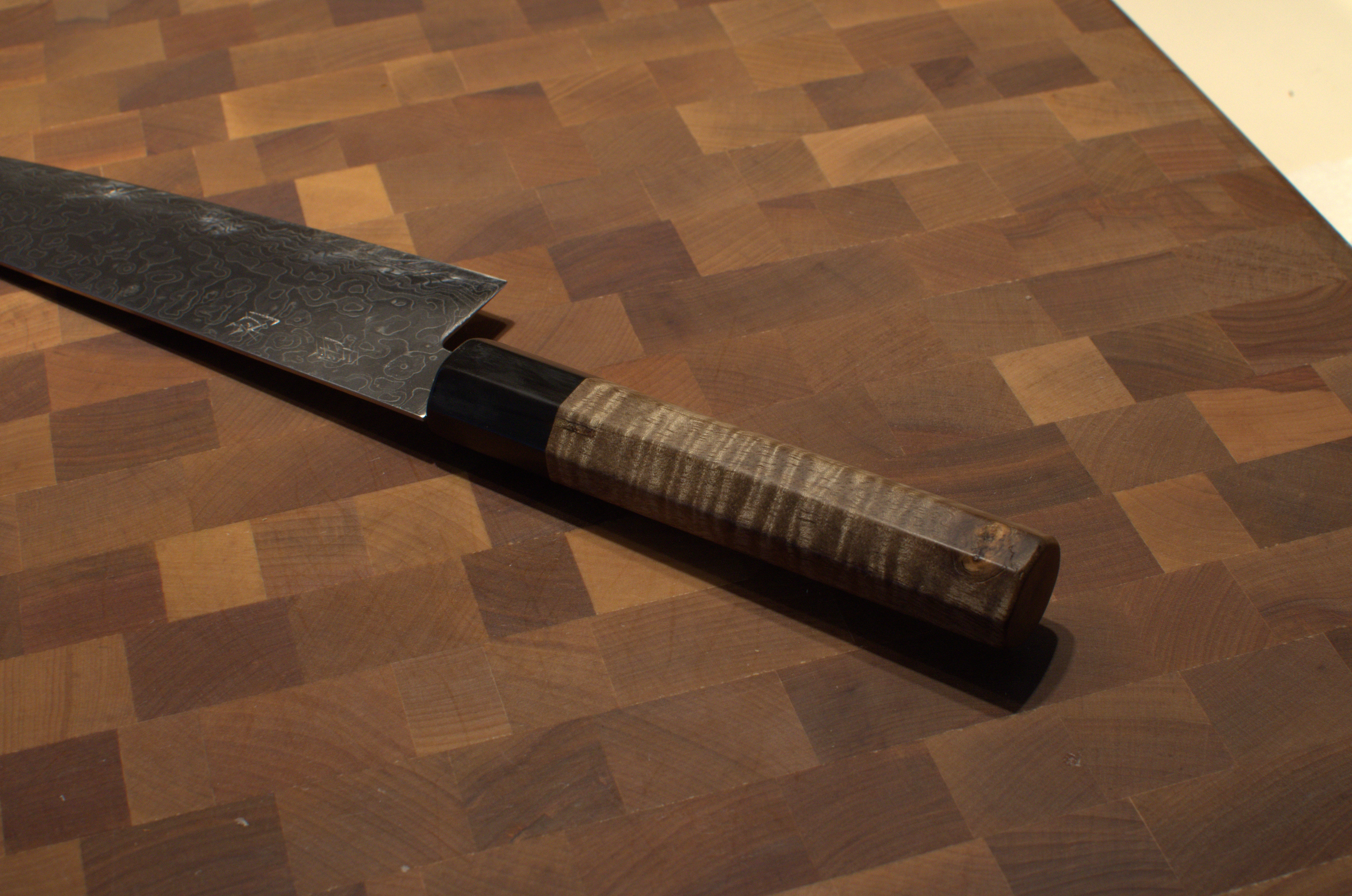The Goko Damascus gyuto is a beautiful knife. It has a nice Damascus cladding and a core of 19C27, which is one of my favorite stainless steels. So when I was offered this knife at a very reasonable price, not to say cheaply, I decided to get one. A 210 mm gyuto.
The origin of this knife is a bit of a mystery. It has been sold by multiple shops under different names: Echizen Hamono, Goko and Goko Hamono are names I have seen. When I asked around, I heard that these knives were traded by Japanese knife wholesalers that liked to keep the origin of the knife confidential. Rumor has it that the knives are made in the Seki area.
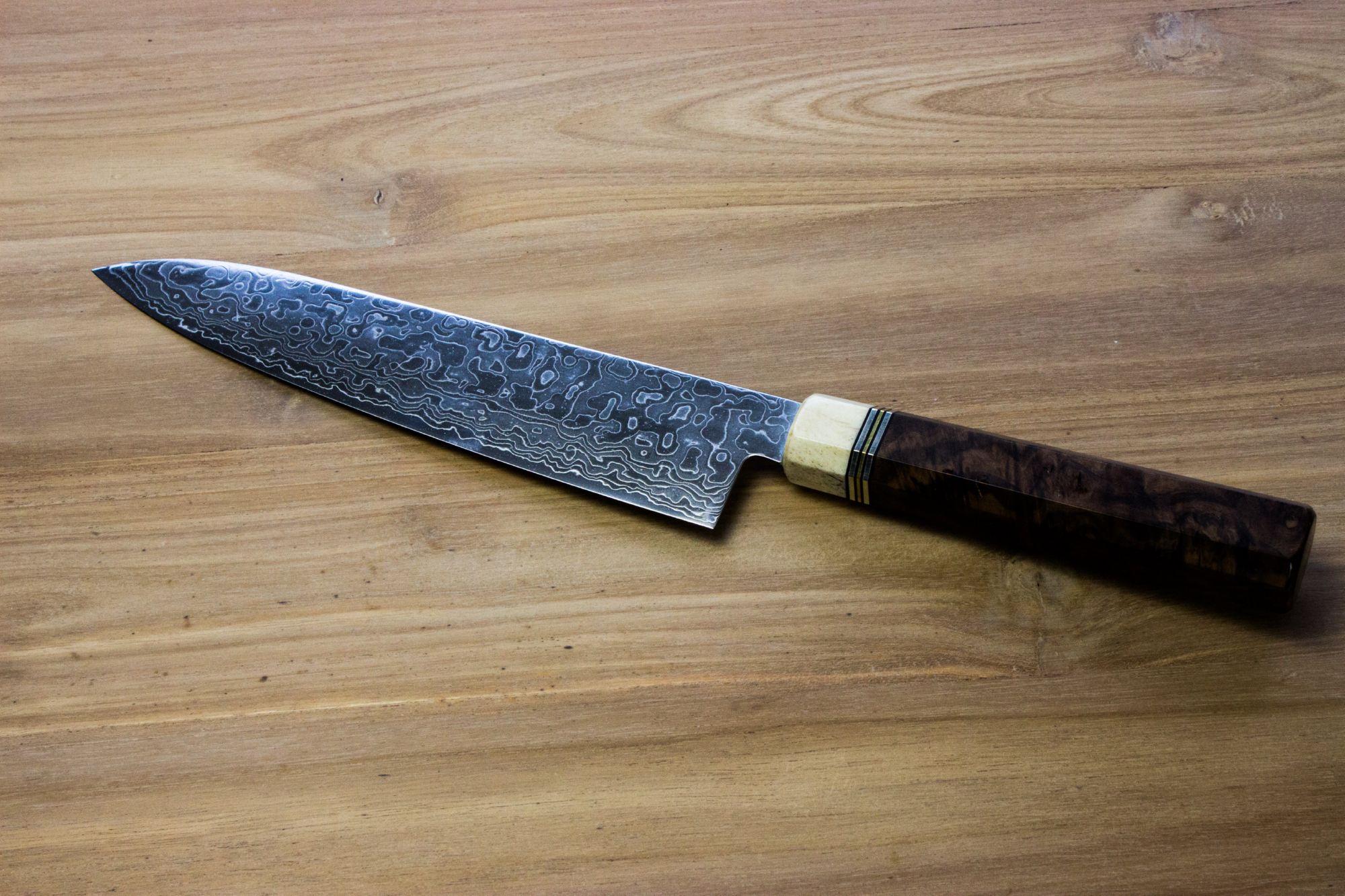
A beautiful knife with a good steel, but with a mysterious origin and quite cheap. There must be something wrong with it. So I thought. I was soon to find out.
First impression
What mainly attracted me to this knife was the Damascus cladding on the blade. I initially got the knife with a friction saya made of a soft wood. When I took the knife out of the saya, it was severely scratched by the saya. I sent that knife back and got another one. But this shows that the cladding is quite soft.
Not everything about the knife is beautiful. The handle is plain ugly: a burnt chestnut wood handle with a plastic ferrule that is at least a millimeter lower than the rest of the handle.
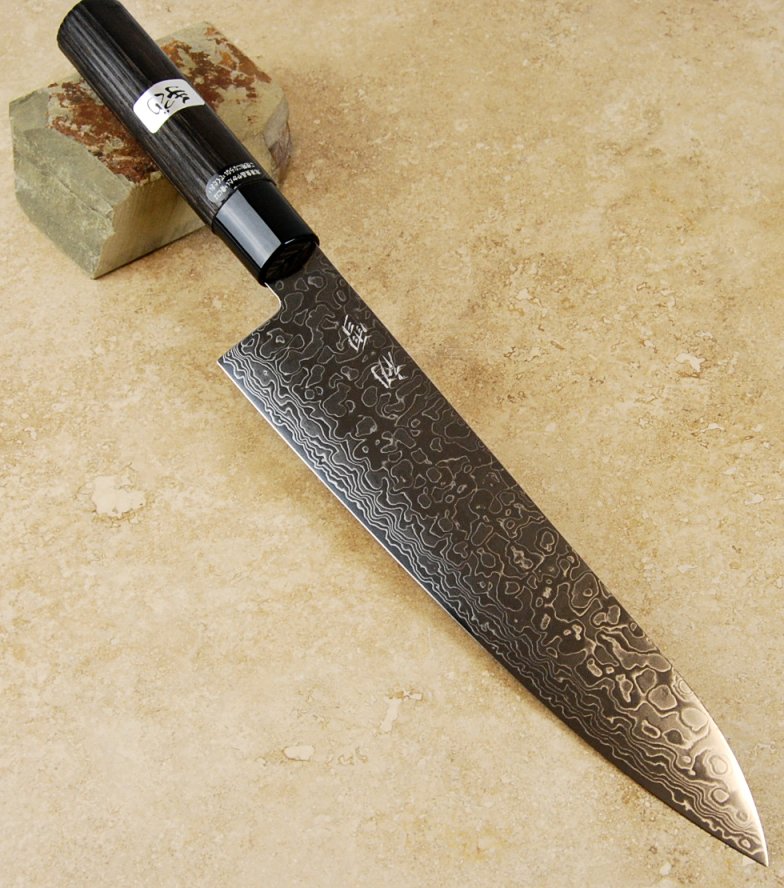
But that problem could be solved. Greg Gola made a beautiful handle for me of walnut burl with a muskox horn ferrule and very nice spacers. The measurements presented here refer to the original knife, however.
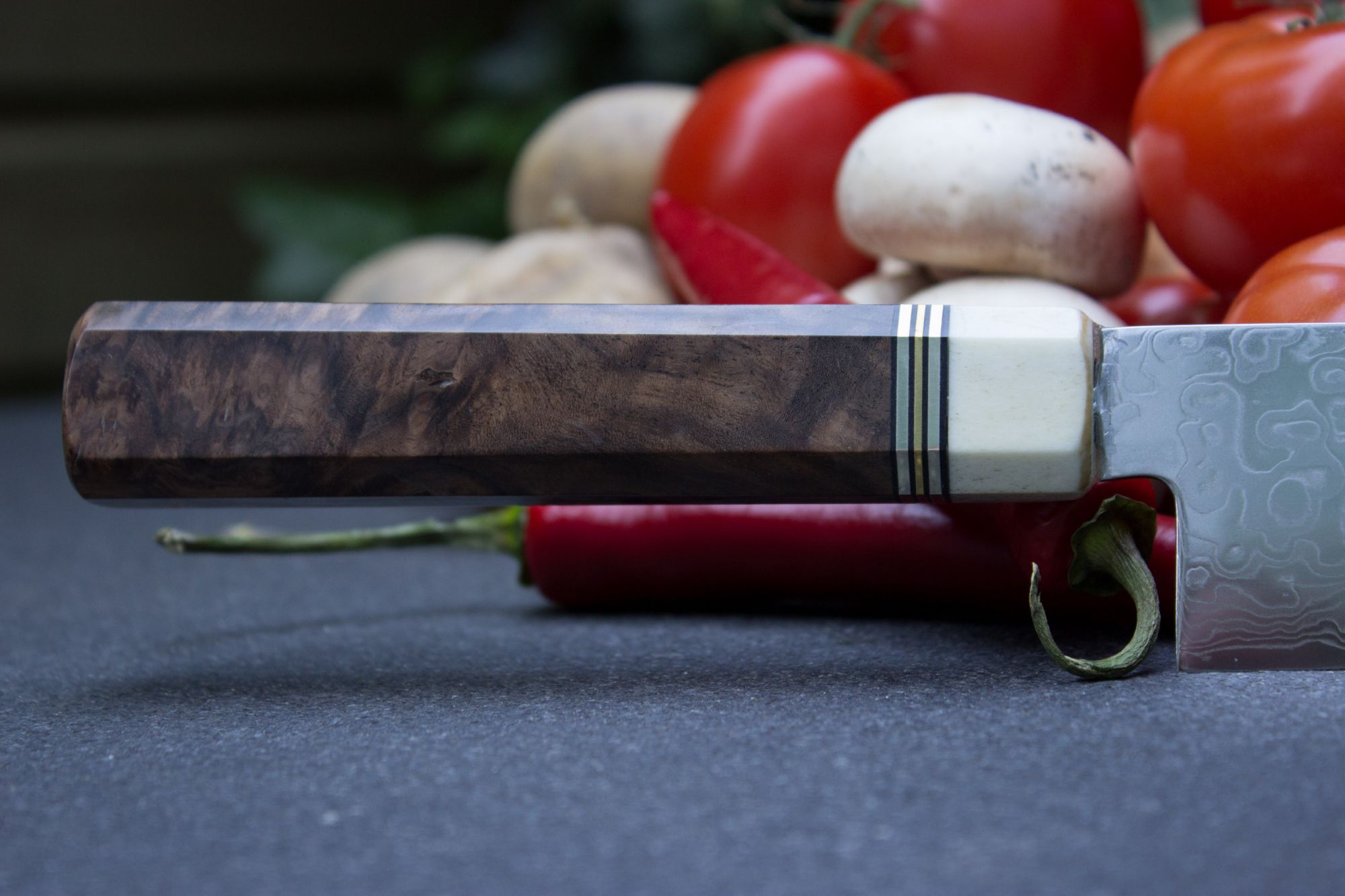
The Goko is definitely a laser type knife: the spine is 1.5 mm wide above the heel, which makes it by far the thinnest blade I have seen. There is little tapering: halfway the blade the spine still measures 1.5 mm. At one centimeter from the tip it is 0.9 mm wide. This is ok, but not spectacularly thin.

At first sight it may seem as if the knife has a proper flat spot, from the heel to about a third of the edge. However, at a closer look one can see the flat spot is not entirely flat: it curves slightly towards the heel of the blade. From about one third of the blade to the tip the edge has a gentle curve with some belly. The knife is 46 cm high at the heel, which is similar to many other 210 mm gyutos.

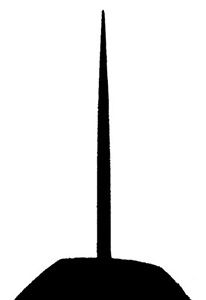
The knife has a sort of full-flat grind where the angle of the grind decreases a bit about 1.5 centimeters above the edge. It is not particularly thin just above the edge.
The spine and choil of the knife have not been rounded, but they have no sharp edges either.
Use
The proof of the pudding is in the eating and particularly for this knife I was not sure how it would cut when I first got it.
Initially the knife was plain blunt, so I sharpened it with my Shapton stones up to 8K. Then I started using it. The first thing I noticed is how light this knife is: only 125 grams. Its balance point is just in front of the choil.
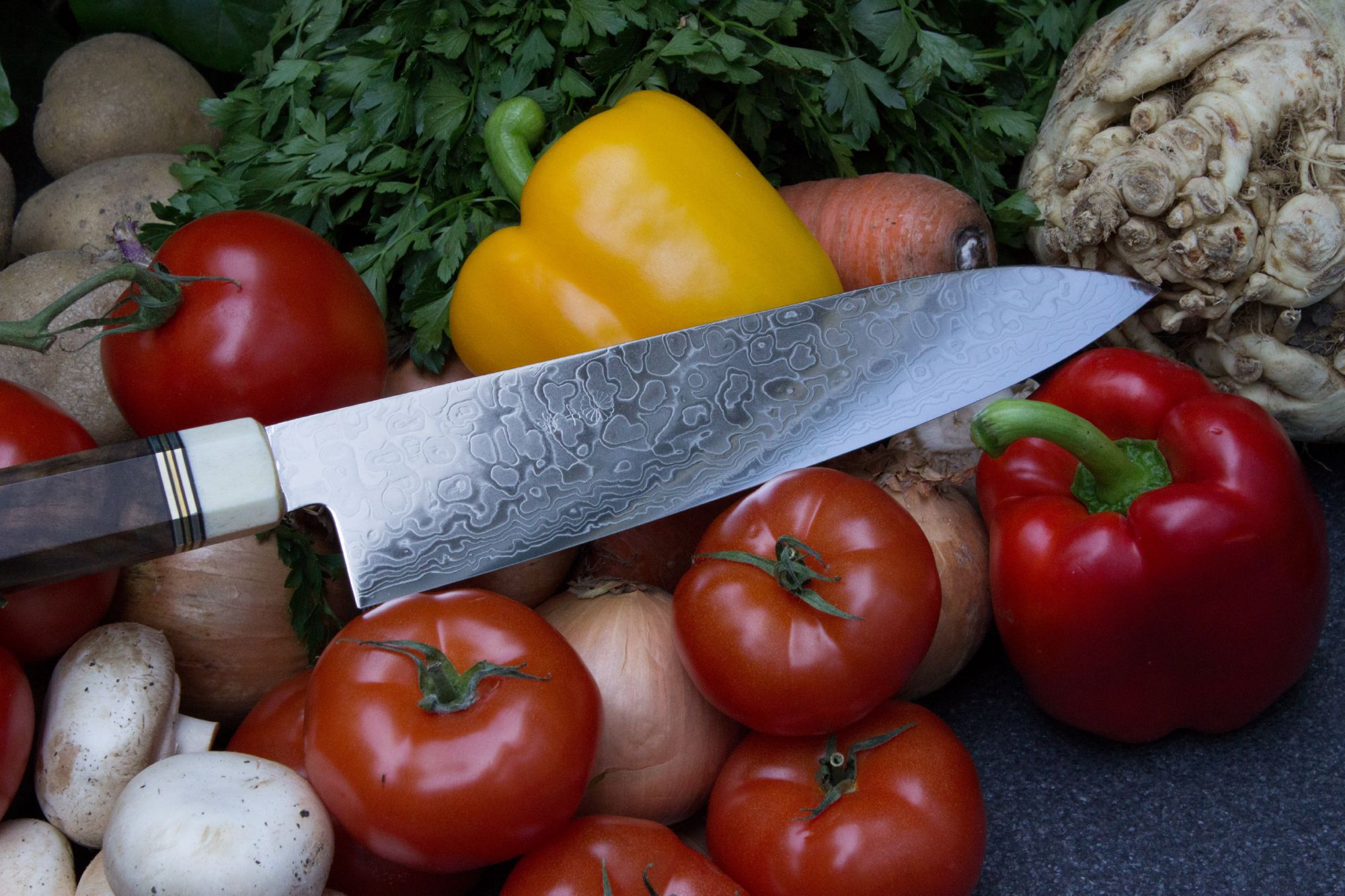
I threw a variety of foods at it: vegetables, meat and fish. The knife cut much better than I had expected. It wasnt great with delicate pieces that benefit from a fine tip, but it dealt well with onions, for example. The knife never wedged, even though it was not very thin above the edge. I felt comfortable with the knife in spite of its thinness. But it would not be my go-to knife for a cabbage or for large quantities. Another disadvantage of such a thin blade is that the knife has quite a lot of flex in it.
The knife worked well when slicing. When push-cutting, the curve on the edge towards the heel was noticeable, but didn't bother me much.
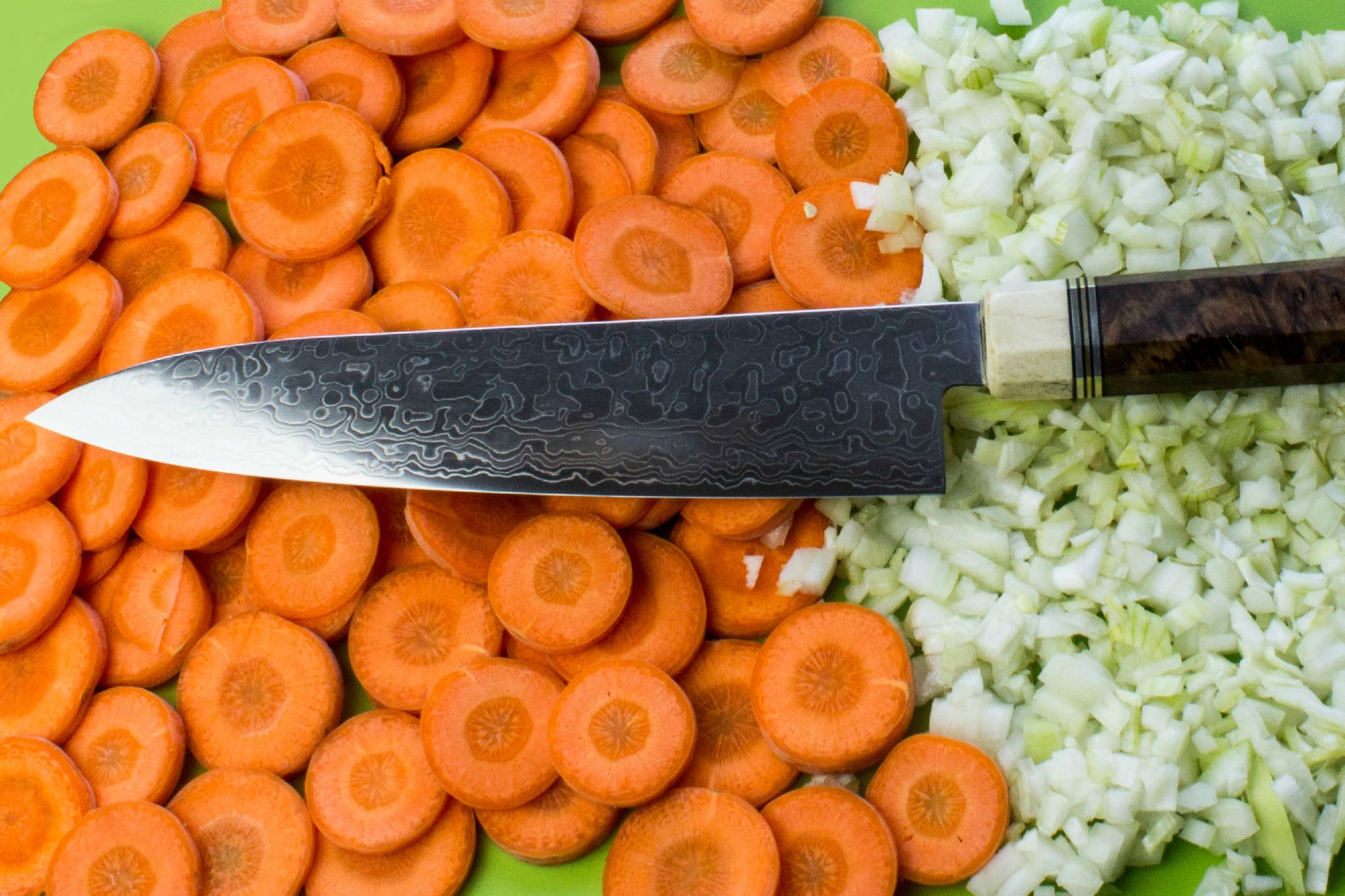
Food release was the worst I have seen on any knife. This is perhaps not a surprise, since it is never good on a thin knife, but the grind on this knife didnt help.
Since the cladding on the knife is so soft, I wondered whether the core steel would be soft as well. But this was not the case, as I had already noticed when sharpening the knife. The edge retention wasnt as great as that of the Suisin Inox honyaki, which has the best 19C27 steel I have ever worked with, but as a home cook I could comfortably use the knife for a few weeks without stropping or sharpening. And I have high standards for sharpness.
Conclusion
The Goko is a knife with a beautiful blade. The handle is ugly, but it can be replaced. The knife cuts better than I expected. Basically, the blade a is sheet of metal with a sharp edge. But this knife proves that such a plate can cut well.
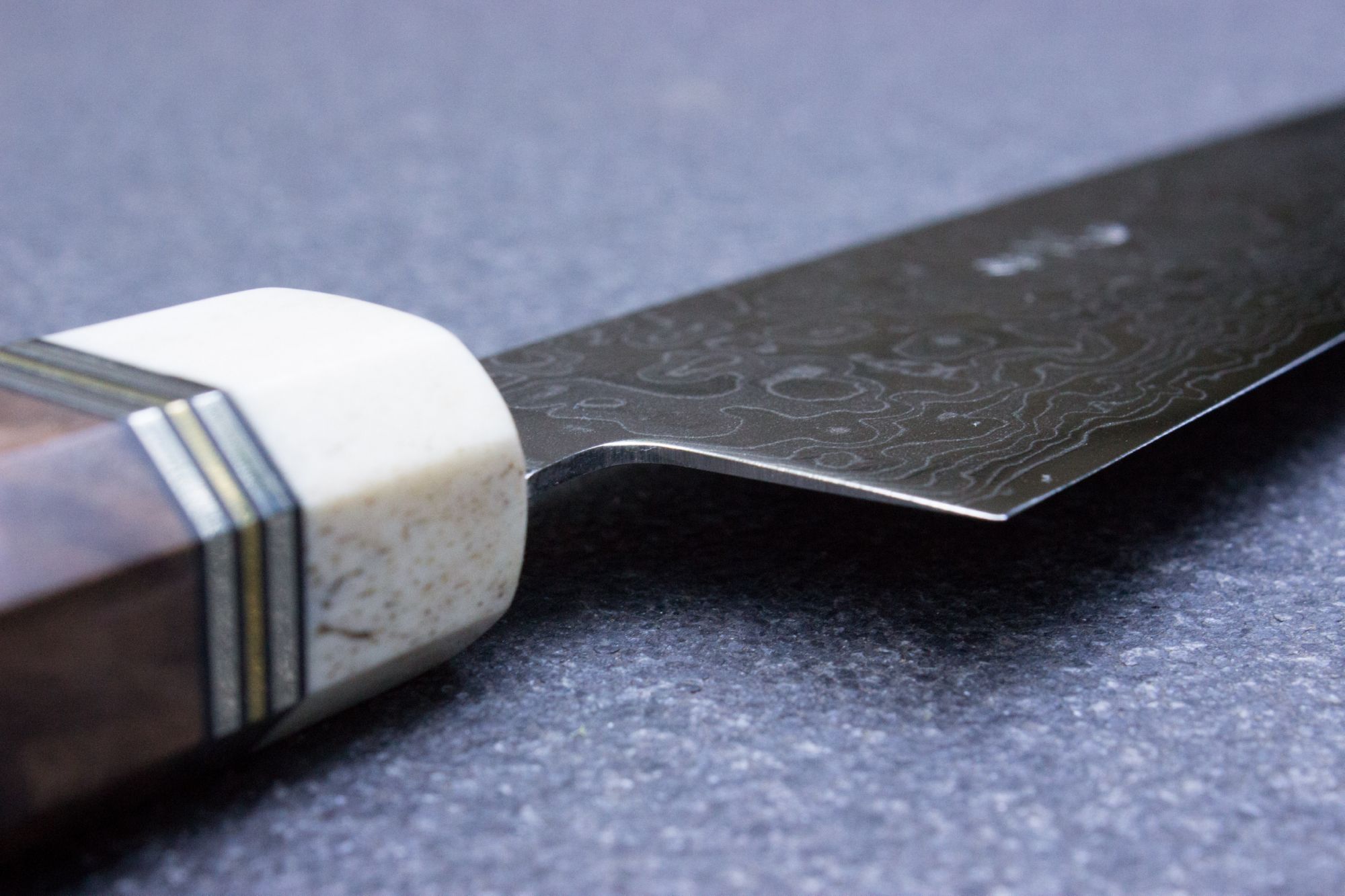
I suspected that for a knife sold at this price there might be a catch. But there isnt. I dont know of any better looking knives at this price point. And it cuts decently, too.
Factsheet
Click on the factsheet for a larger version.
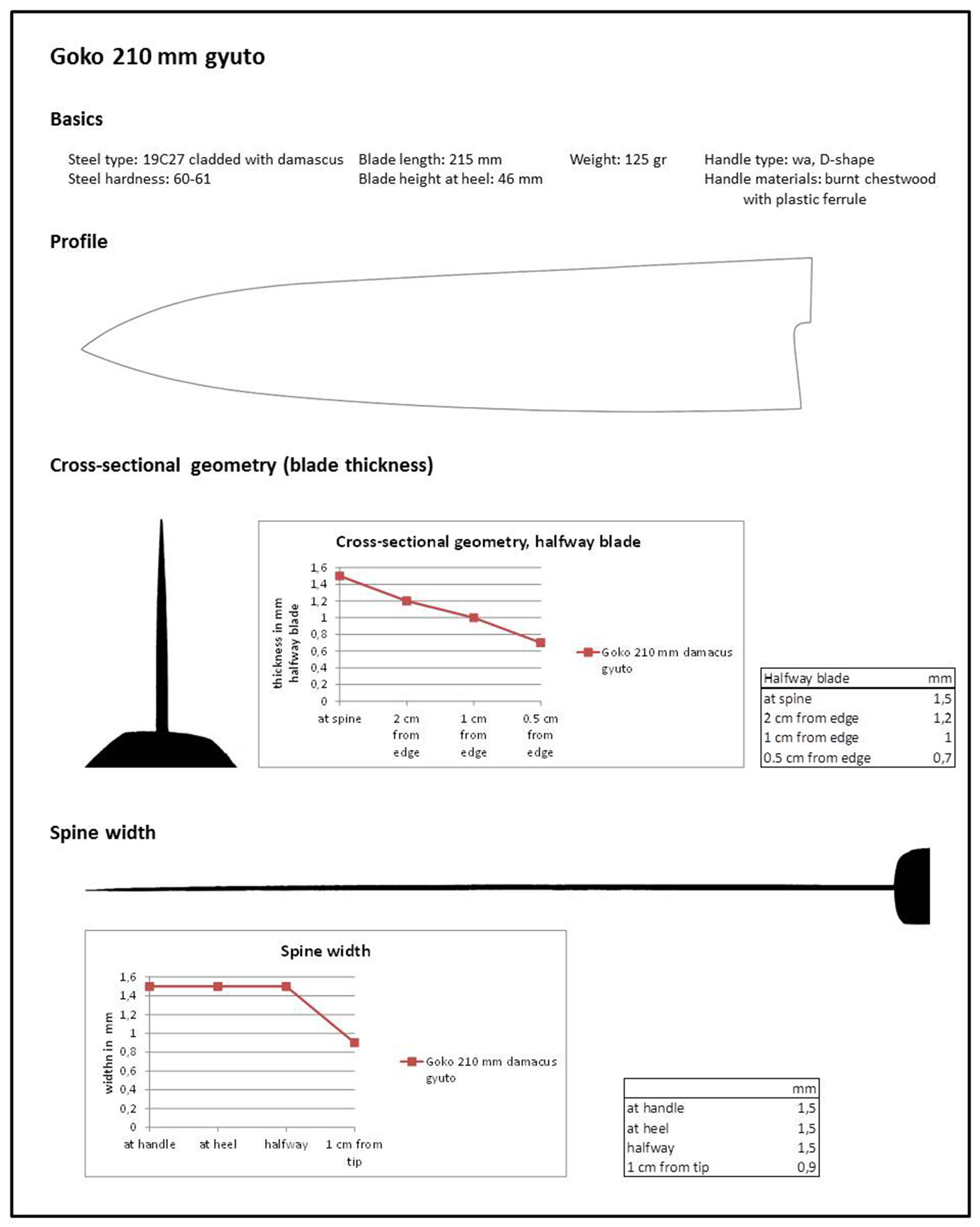
The origin of this knife is a bit of a mystery. It has been sold by multiple shops under different names: Echizen Hamono, Goko and Goko Hamono are names I have seen. When I asked around, I heard that these knives were traded by Japanese knife wholesalers that liked to keep the origin of the knife confidential. Rumor has it that the knives are made in the Seki area.

A beautiful knife with a good steel, but with a mysterious origin and quite cheap. There must be something wrong with it. So I thought. I was soon to find out.
First impression
What mainly attracted me to this knife was the Damascus cladding on the blade. I initially got the knife with a friction saya made of a soft wood. When I took the knife out of the saya, it was severely scratched by the saya. I sent that knife back and got another one. But this shows that the cladding is quite soft.
Not everything about the knife is beautiful. The handle is plain ugly: a burnt chestnut wood handle with a plastic ferrule that is at least a millimeter lower than the rest of the handle.

But that problem could be solved. Greg Gola made a beautiful handle for me of walnut burl with a muskox horn ferrule and very nice spacers. The measurements presented here refer to the original knife, however.

The Goko is definitely a laser type knife: the spine is 1.5 mm wide above the heel, which makes it by far the thinnest blade I have seen. There is little tapering: halfway the blade the spine still measures 1.5 mm. At one centimeter from the tip it is 0.9 mm wide. This is ok, but not spectacularly thin.

At first sight it may seem as if the knife has a proper flat spot, from the heel to about a third of the edge. However, at a closer look one can see the flat spot is not entirely flat: it curves slightly towards the heel of the blade. From about one third of the blade to the tip the edge has a gentle curve with some belly. The knife is 46 cm high at the heel, which is similar to many other 210 mm gyutos.


The knife has a sort of full-flat grind where the angle of the grind decreases a bit about 1.5 centimeters above the edge. It is not particularly thin just above the edge.
The spine and choil of the knife have not been rounded, but they have no sharp edges either.
Use
The proof of the pudding is in the eating and particularly for this knife I was not sure how it would cut when I first got it.
Initially the knife was plain blunt, so I sharpened it with my Shapton stones up to 8K. Then I started using it. The first thing I noticed is how light this knife is: only 125 grams. Its balance point is just in front of the choil.

I threw a variety of foods at it: vegetables, meat and fish. The knife cut much better than I had expected. It wasnt great with delicate pieces that benefit from a fine tip, but it dealt well with onions, for example. The knife never wedged, even though it was not very thin above the edge. I felt comfortable with the knife in spite of its thinness. But it would not be my go-to knife for a cabbage or for large quantities. Another disadvantage of such a thin blade is that the knife has quite a lot of flex in it.
The knife worked well when slicing. When push-cutting, the curve on the edge towards the heel was noticeable, but didn't bother me much.

Food release was the worst I have seen on any knife. This is perhaps not a surprise, since it is never good on a thin knife, but the grind on this knife didnt help.
Since the cladding on the knife is so soft, I wondered whether the core steel would be soft as well. But this was not the case, as I had already noticed when sharpening the knife. The edge retention wasnt as great as that of the Suisin Inox honyaki, which has the best 19C27 steel I have ever worked with, but as a home cook I could comfortably use the knife for a few weeks without stropping or sharpening. And I have high standards for sharpness.
Conclusion
The Goko is a knife with a beautiful blade. The handle is ugly, but it can be replaced. The knife cuts better than I expected. Basically, the blade a is sheet of metal with a sharp edge. But this knife proves that such a plate can cut well.

I suspected that for a knife sold at this price there might be a catch. But there isnt. I dont know of any better looking knives at this price point. And it cuts decently, too.
Factsheet
Click on the factsheet for a larger version.






